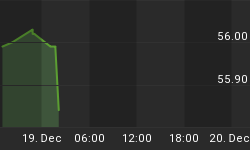Financial market volatility has receded significantly over the past two weeks. The CBOE S&P 500 Volatility Index (VIX) dropped from 45.5 at the end of September to 28.2 two days ago, before again edging up a notch.

Source: StockCharts.com
The drop brought the VIX back to less than one standard deviation from its average since 1986. While still high, it signals that anxiety levels have moved away from crisis levels.

Sources: CBOE, Plexus Asset Management.
But what led to the easing of volatilities? In previous articles I indicated that the most important factor that had led to the easing of crisis levels in the past was when prices fell to levels that attracted renewed buying from long-term investors. This is exactly what happened this time round. The Shiller PE10 ratio dropped to 18.67 on Monday, 3 October, the lowest since August 2009. The earnings yield over ten years, or what I call Shiller EY10 (inverse of PE10), therefore rose to 5.36%.

Sources: CBOE, Robert Shiller; Plexus Asset Management.
The value per unit of volatility therefore bounced off the average of the major turning points in the past.

Sources: CBOE, Robert Shiller; Plexus Asset Management.
The S&P 500 bounced strongly and ended last week 11.4% up from its lows on 3 October.

Sources: CBOE, I-Net Bridge; Plexus Asset Management.
Global investors are becoming less risk averse. Emerging-market bond yield spreads are heading south again.

Sources: CBOE, I-Net Bridge; Plexus Asset Management.
The yield on the 10-year government bond note has turned and is rising again.

Sources: CBOE, I-Net Bridge; Plexus Asset Management.
The sell-off in gold bullion is over for now.

Sources: CBOE, I-Net Bridge; Plexus Asset Management.
The sell-off in emerging-market and commodity-dependent currencies has receded.

Sources: CBOE, I-Net Bridge; Plexus Asset Management.

Sources: CBOE, I-Net Bridge; Plexus Asset Management.
Global investors have again found value in emerging-market equities, using South Africa as an example in the chart below..

Sources: Robert Shiller, Dismal Scientist; Plexus Asset Management.
Does that mean that the firestorm is over? I think the global financial system is not out of the woods yet as the European Union is still facing headwinds. Be that as it may, what is of particular note is that global long-term investors have shown their hand by buying the market again. The dire position of some European banks also indicates they have probably shut most of their risk positions and taken their pain - I think the sell-off in gold bullion is an indication of this. The global value at risk through derivatives has therefore probably diminished substantially.
Also, the easing of anxiety in financial market will help U.S. consumer confidence in coming months.

Sources: CBOE, Dismal Scientist; Plexus Asset Management.
As I said in a number of posts last week (see "Stock markets: In long-term indicators we trust" and "Global stock market moving averages - a mixed picture"), I would not be surprised to see a further recovery in global stock markets over the next few weeks, with those markets most deeply oversold relative to their 200-day moving averages offering the strongest recovery potential. However, to add conviction to the rally most of the global indices (as well as the majority of individual stocks) need to better their 200-day lines, and do so on better volumes seen thus far. Until this happens, follow a cautious approach.
















